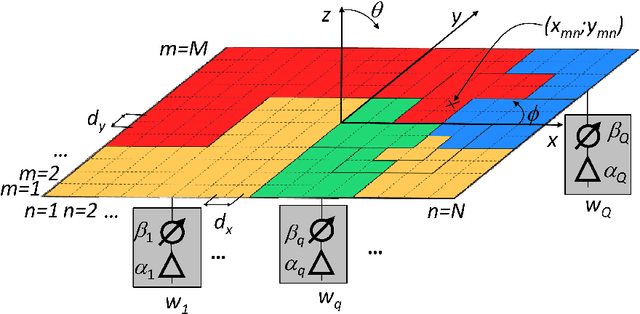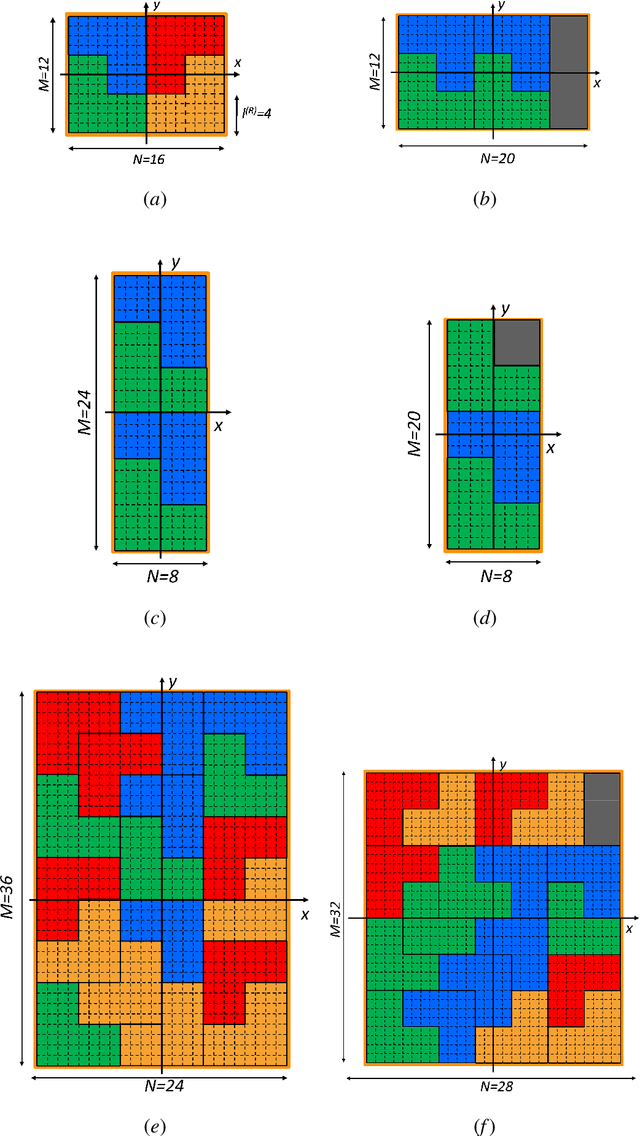A Self-Replicating Single-Shape Tiling Technique for the Design of Highly Modular Planar Phased Arrays -- The Case of L-Shaped Rep-Tiles
Paper and Code
Aug 18, 2022



The design of irregular planar phased arrays (PAs) characterized by a highly-modular architecture is addressed. By exploiting the property of self-replicating tile shapes, also known as rep-tiles, the arising array layouts consist of tiles having different sizes, but equal shape, all being generated by assembling a finite number of smaller and congruent copies of a single elementary building-block. Towards this end, a deterministic optimization strategy is used so that the arising rep-tile arrangement of the planar PA is an optimal trade-off between complexity, costs, and fitting of user-defined requirements on the radiated power pattern, while guaranteeing the complete overlay of the array aperture. As a representative instance, such a synthesis method is applied to tile rectangular apertures with L-shaped tromino tiles. A set of representative results, concerned with ideal and real antenna models, as well, is reported for validation purposes, but also to point out the possibility/effectiveness of the proposed approach, unlike state-of-the-art tiling techniques, to reliably handle large-size array apertures.
 Add to Chrome
Add to Chrome Add to Firefox
Add to Firefox Add to Edge
Add to Edge